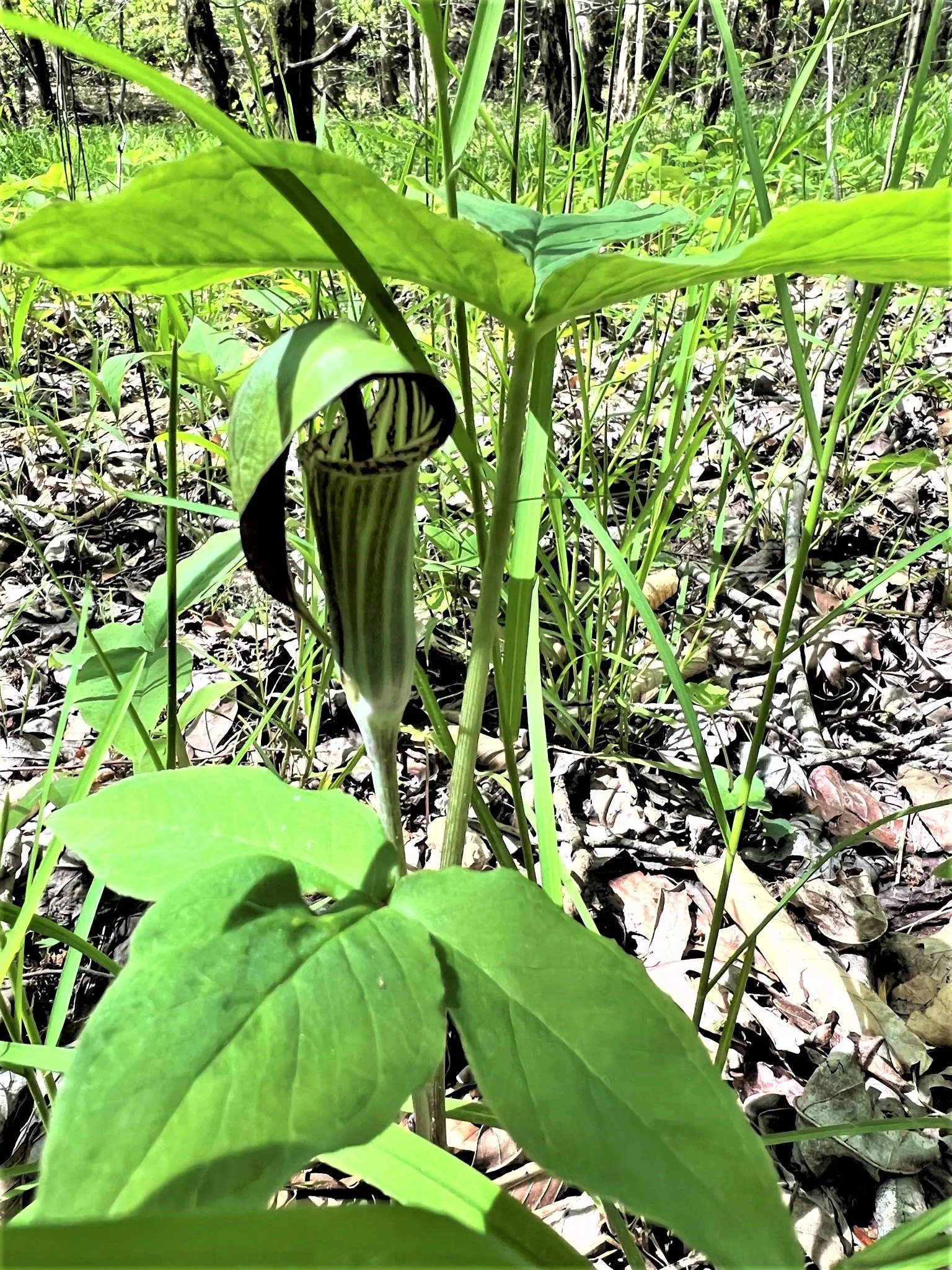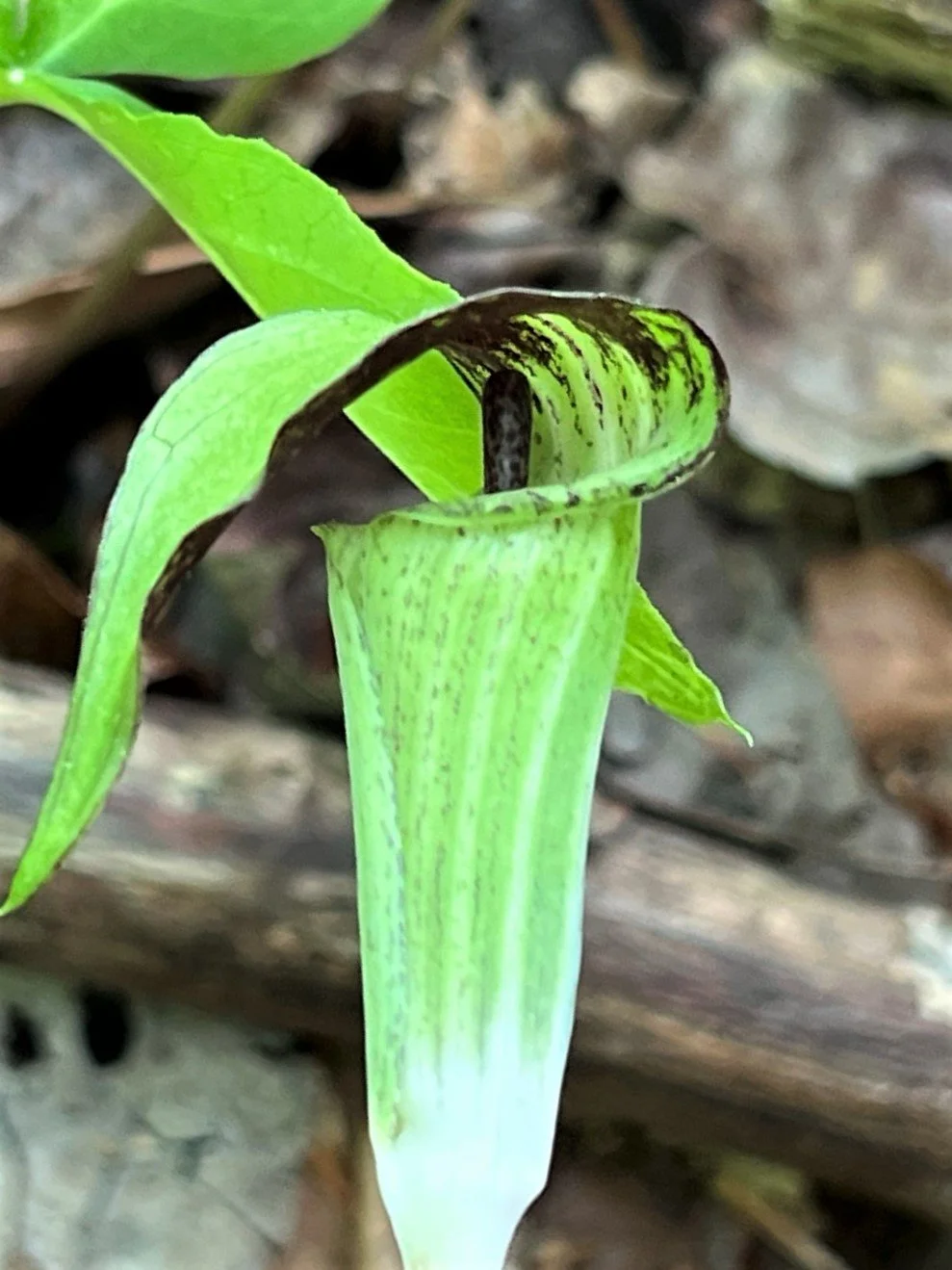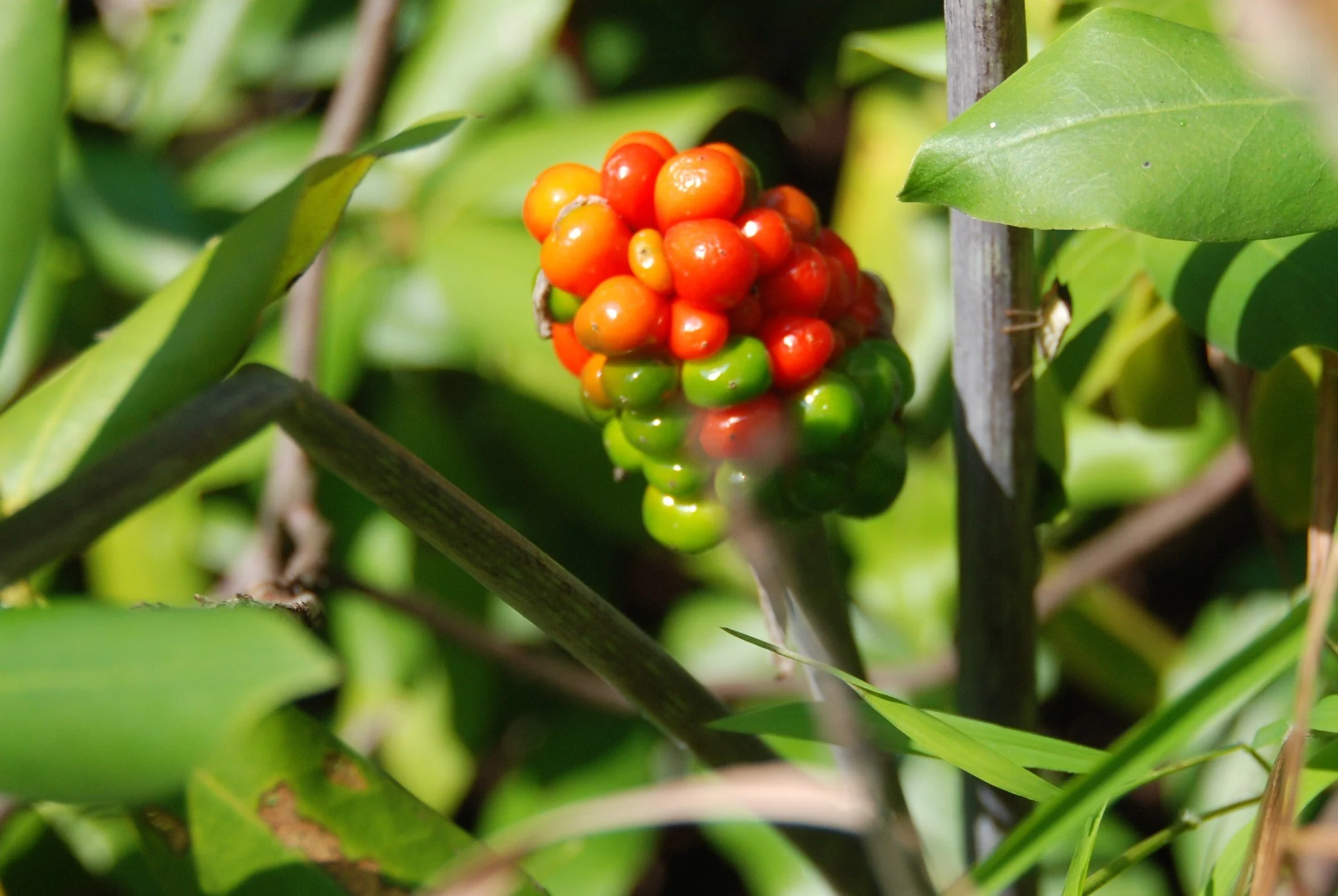Plant of the Month May 2022, Jack-in-the-pulpit
Jack-in-the-Pulpit, Arisaema triphyllum
Jack-in-the-Pulpit, Arisaema triphyllum, is one of our most intriguing and curious woodland wildflowers and is blooming now. I am certainly not alone in being intrigued by this fascinating wildflower which has nearly as many colorful common names as it does flower patterns – Preacher in the Pulpit, Bloody Arum, Bog Onion, Indian Turnip, Indian Cradle, and Lord and Lady. But Jack-in-the-pulpit is the Virginia Flora’s common name for it and it fits (check out the photo). Found in every county in Virginia, it ranges from Canada south to Florida and Texas. As with most plants with such a large geographic range, Jack-in-the-pulpit exhibits a great deal of variability both in size and floral characteristics. Plants range from one to 2.5 feet high but average about 12 – 16” and have one or two large, divided leaves, each with three oval leaflets that partially conceal the flowers. Like many members of the Arum family to which it belongs, they have a curious flower structure with a striped spathe or hood (popularly called the “pulpit”) that wraps around and partially encloses the green or brown club-like spadix (flower spike) – the “Jack” or “preacher”. The color of the spathe can vary dramatically from deep purple to green and is often striped with purple or white; no two flowers seem to be exactly alike. Intriguingly small plants start out male but can spontaneously change to females the following year as the plant grows larger and become more vigorous. Research indicates the sex is determined by the amount of nutrients stored in the corm (root-storage organ) during the previous year’s growing season. If enough resources have accumulated, the female flowers will be fertile while the male will be sterile, thus preventing self-pollination. The tiny flowers are pollinated by small flies and gnats that crawl beneath the spathe and down the spadix to the tiny flowers to collect pollen. Females will produce green berries that cover the spadix and ripen into showy, lustrous red berries by late summer.
Jack-in-the-pulpit grows in moist upland woods, floodplain forests and swamp hummocks across Virginia. In gardens it prefers similar conditions, growing best in partially to fully shaded moist woodland gardens with rich soils or those amended with organic matter to aid in moisture retention. It is a wonderful plant to grow along streams and in other moist areas; it grows best with constantly moist, rich soils. Roots and foliage of Jack-in-the-pulpit contain calcium oxalate crystals that cause intense burning to the mouth and other tissues if ingested and accordingly the plant is rarely bothered by herbivores like deer or rabbits or other pests and diseases. When grown in moist soil, the plants will produce offsets (offshoots) that separate from the main rhizome and expand into colonies. Jack-in-the-pulpit may also be grown from seed, but it can take up to five years to produce flowers. The boldly divided leaves add a lush look to the garden but may die back and go dormant by late summer. The May flowers are always a stand-out and the red fruit is incredibly showy in late summer and early fall.
Native Americans used the plant for medicinal purposes to treat various ailments including head and joint aches and skin diseases, and even reputedly for snakebites. They also reportedly cooked and ate the corms leading to the common name Indian Turnip. Stories also abound about Native Americans mixing the corm with meat and leaving it for their enemies to find and eat. The burning sensation is not immediate meaning that a great quantity could be eaten before leaving the enemy in great discomfort or even death. Because of the high toxicity rating for this plant, it is best to limit your admiration and use of this plant to the garden or woodland walks. Some woodland birds do eat the ripe berries including Wild Turkeys and Wood Thrush.
Jack-in-the-pulpits bloom through May and it is a delight to hike down to a nearby wooded swamp or to Cabin Swamp or the Mill Pond at Hickory Hollow NAP to admire the intriguing Jack-in-the-pulpit.
Photos by Betsy Washington
Photo 1. Jack-in-the-pulpit, flower and foliage
Photo 2. Jack-in-the-Pulpit flower detail
Photo 3. Late Summer Fruit



